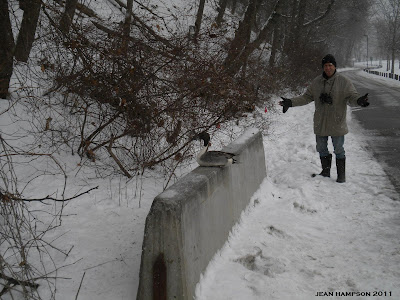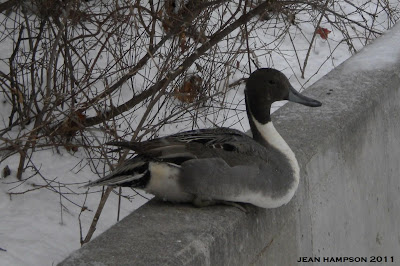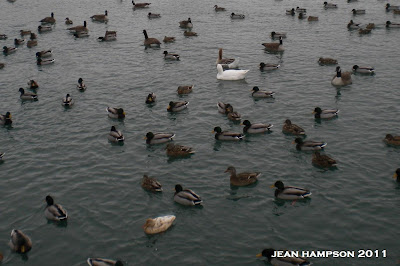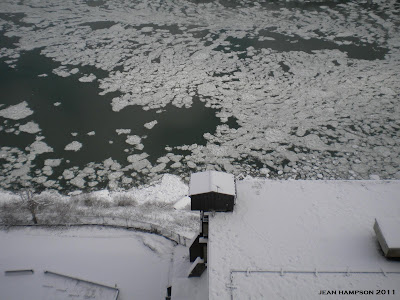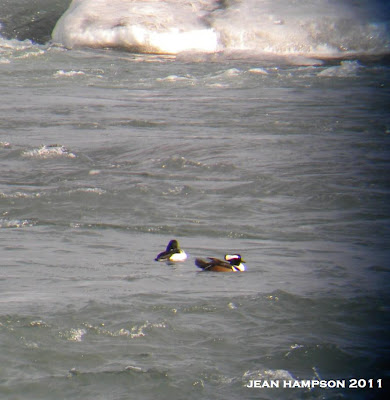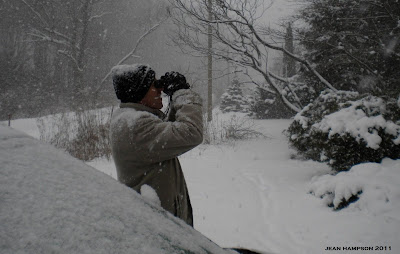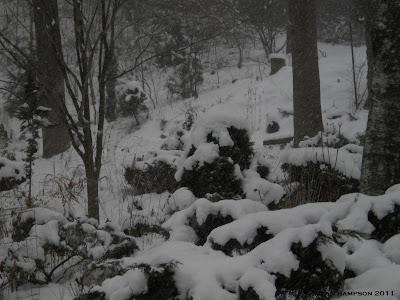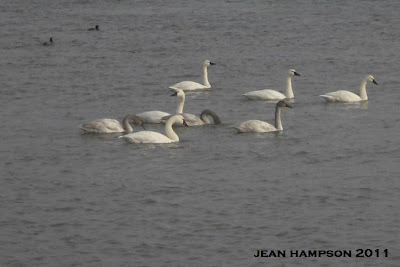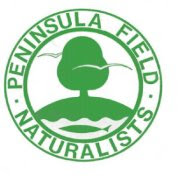In a post from early February 2010, I indicated that I would attempt my own
Bird-A-Day challenge in 2011. Well 2011 is here and so far so good (birds to be added with every post). For the challenge, a new bird seen or heard is added to the list for that date. No repeats or skipping of days allowed.
From January 4-7, additions to the list were seen or heard while on the property of my employer or at a planned location after work. The Downy was heard from the parking lot as I walked into work Tuesday morning. The next two days involved stopping at the marina in Port Dalhousie. The Trumpeter Swan was interesting, it had a yellow tag on its left wing. I submitted the number to the
Patuxent Wildlife Research Center and received a certificate of appreciation from the USGS and CWS for informing them of Trumpeter Swan C14. The male swan hatched in 2009 and was banded in Erin, Ontario. Thanks to Jean for spotting the swan and to Marcie for providing me with the link.
The Red-tailed Hawk was seen perched in a tree across the street from work. It was either the hawk or American Crow since I was closing that Friday and there would be no daylight at the end of my work day. I thought it best to save the crow for another observation when time did not allow for a quick stop at a park or body of water before heading home for the evening. Hopefully my weekends will allow for the addition of a unique species. I don't want to burn House Sparrow or European Starling this early in the game.
February 28-Greater Scaup
February 27-Northern Mockingbird
February 26-Red-breasted Nuthatch
February 25-Northern Harrier
February 24-Wild Turkey
February 23-Red-winged Blackbird
February 22-Hooded Merganser
February 21-Tundra Swan
February 20-Redhead
February 19-Red-bellied Woodpecker
February 18-Sharp-shinned Hawk
February 17-Canada Goose
February 16-House Sparrow
February 15-Rock Pigeon
February 14-Mallard
February 13-Great Black-backed Gull
February 12-Merlin
February 11-Horned Lark
February 10-Ring-necked Pheasant
February 9-Mute Swan
February 8-Black-capped Chickadee
February 7-Song Sparrow
February 6-Carolina Wren
February 5-Hairy Woodpecker
February 4-Blue Jay
February 3-Long-tailed Duck
February 2-European Starling
February 1-Ring-billed Gull
January 31-Red-breasted Merganser
January 30-Ring-necked Duck
January 29-Glaucous Gull
January 28-White-throated Sparrow
January 27-American Robin
January 26-Belted Kingfisher
January 25-Northern Cardinal
January 24-American Kestrel
January 23-Northern Pintail
January 22-Brown Creeper
January 21-Dark-eyed Junco
January 20-American Black Duck
January 19-Common Goldeneye
January 18-Canvasback
January 17-American Coot
January 16-American Crow
January 15-Pine Siskin
January 14-Mourning Dove
January 13-Cooper's Hawk
January 12-Common Merganser
January 11-American Tree Sparrow
January 10-Double-crested Cormorant
January 9-Northern Shrike
January 8-Eastern Towhee
January 7-Red-tailed Hawk
January 6-Bufflehead
January 5-Trumpeter Swan
January 4-Downy Woodpecker
January 3-Bald Eagle
January 2-Rough-legged Hawk
January 1-Common Redpoll

